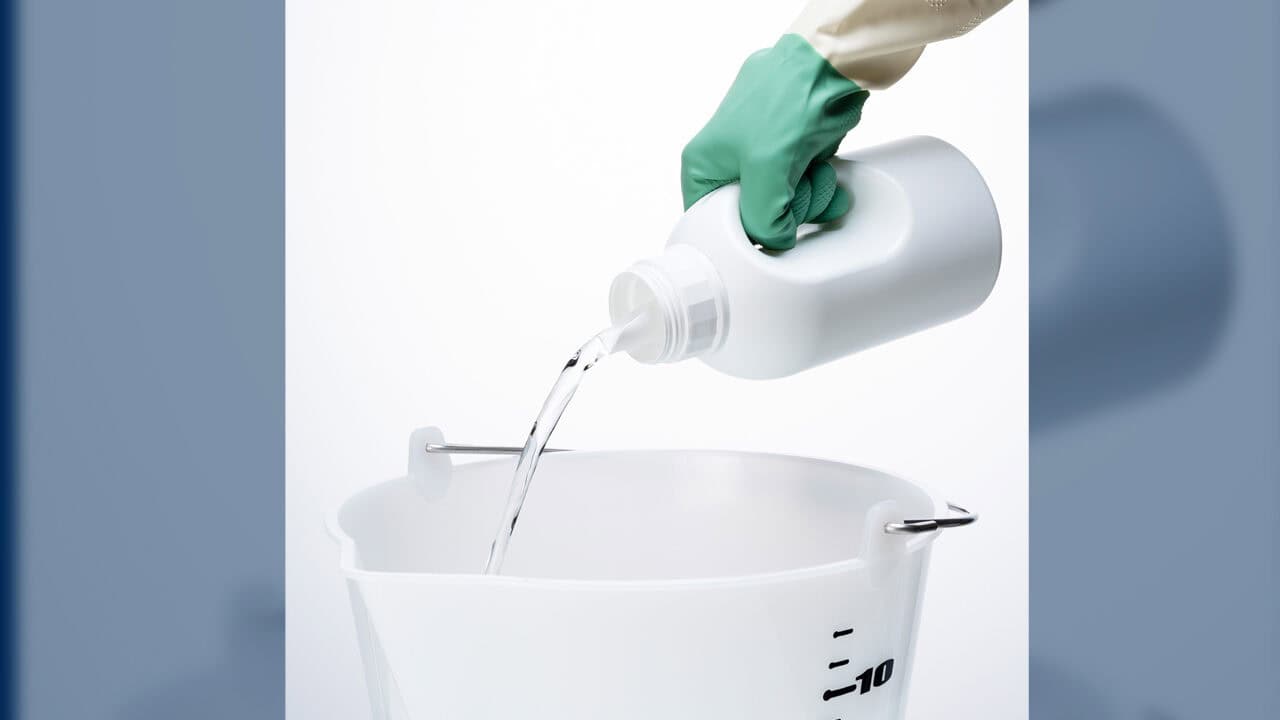The floor care industry has a necessary evil in its process: the proper dilution of chemistry. While there are now a couple of ways to measure out chemistry, the reality is that dilution is often done using the “glug-glug” method. This casual approach is a gamble that introduces a high margin of human error and can lead to serious consequences.
The Consequences of “Glug-Glug”
Using a measuring cup is the best way to ensure that you are mixing chemicals to the exact specifications required. The risks of not using one are significant:
- Inaccurate Ratios: Over-diluting a cleaning agent makes it ineffective, requiring more time and effort to get the job done. This wastes both the chemical and the labor. Conversely, under-diluting creates a solution that is too strong. This can damage surfaces, leave behind sticky or slippery residues, and pose significant health and safety risks to employees and building occupants.
Technology
In the late 1980s, chemical manufacturers began providing automated chemical dilution systems to their customers. One reason for this was to eliminate the guesswork and dangers associated with manual dilution. These wall-mounted or portable units connect to a water source and a concentrated chemical container, dispensing a diluted solution with the push of a button. A very important second reason was to capture more sales.

Most of these systems operate on the venturi principle, where a high-velocity stream of water creates a vacuum that siphons the concentrated chemical from its container, mixing it with the water at a precise, pre-set ratio. While these systems promise enhanced safety and consistency, they introduce their own set of potential problems.
- Maintenance and Clogging: Over time, mineral deposits from the water or chemical residue can clog the small orifices and metering tips that regulate the chemical flow. This blockage can decrease the amount of chemical being siphoned, leading to an over-diluted and ineffective solution. Regular cleaning and maintenance are essential to prevent this.
- Water Pressure Fluctuations: The venturi principle is sensitive to water pressure. A significant drop or spike in water pressure can alter the flow rate, affecting the suction and, consequently, the chemical-to-water ratio. While many systems are designed to handle minor fluctuations, extreme changes can still impact accuracy.
- Viscosity and Temperature: The viscosity (thickness) of a chemical concentrate can affect how easily it is siphoned. If a chemical’s viscosity changes due to temperature, it can lead to a less accurate mix. Using chemicals within the manufacturer’s recommended temperature range is important.
- Designated ratios: If you are using a chemical dilution system with a chemical that doesn’t have a ratio (oz/gal) that they have a metering tip for, then you either have to under or over dilute the solution
Best Practices for Proper Dilution
Whether you use a dilution system or a measuring cup, proper use and maintenance are essential to get the best results.
- Follow the Label: The chemists who create chemicals for the cleaning industry are extremely knowledgeable. When they suggest using “X” amount of chemistry per gallon of water, they aren’t suggesting that you “cut” it in half to save money or double it because the floor looks dirtier than normal. Always ensure the chemical solution you create matches what the labeled instructions say.
- Choose a Measuring Cup: While automated systems have their place, the most reliable and foolproof method for proper dilution is to use a simple measuring cup. This method removes the risk of equipment failure, water pressure issues, and clogging.
- Training and PPE: All employees should receive thorough, hands-on training on how to properly dilute chemicals. This includes selecting the correct chemical, using the appropriate amount, and wearing the proper personal protective equipment (PPE), such as gloves and goggles. Always label all bottles and buckets with the chemical name and safety information.
As I say in every class I teach, the chemists who create chemicals for the cleaning industry are extremely smart, and when they suggest using “X” amount of chemistry per gallon of water, they aren’t saying to “cut” it in half to save money or double it because the floor looks dirtier than normal….
At the end of the day, always make sure the chemical solution you create matches what the labeled instruction says.
